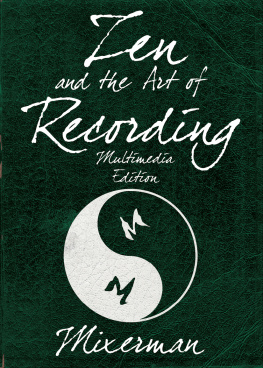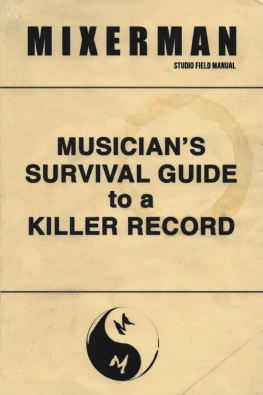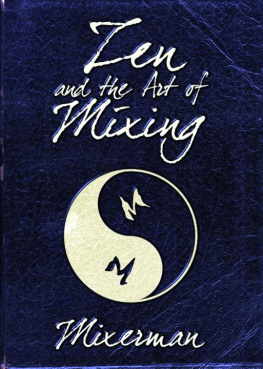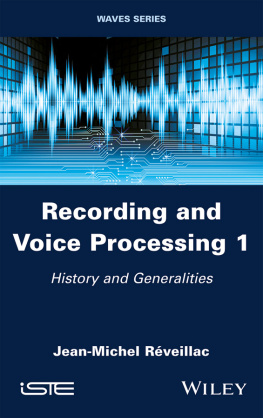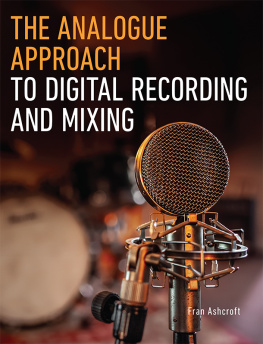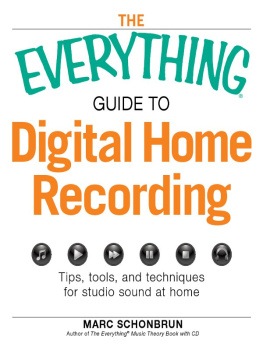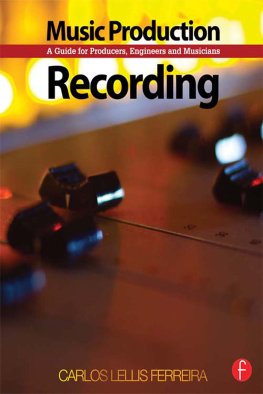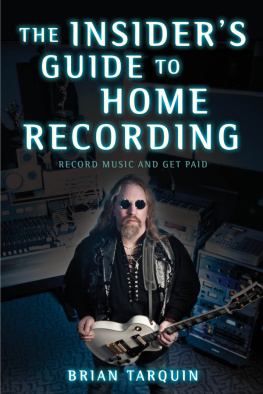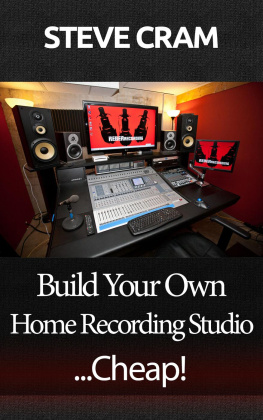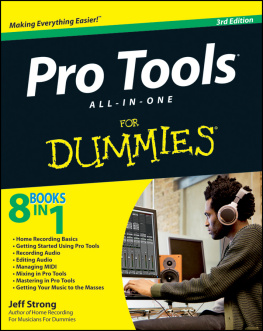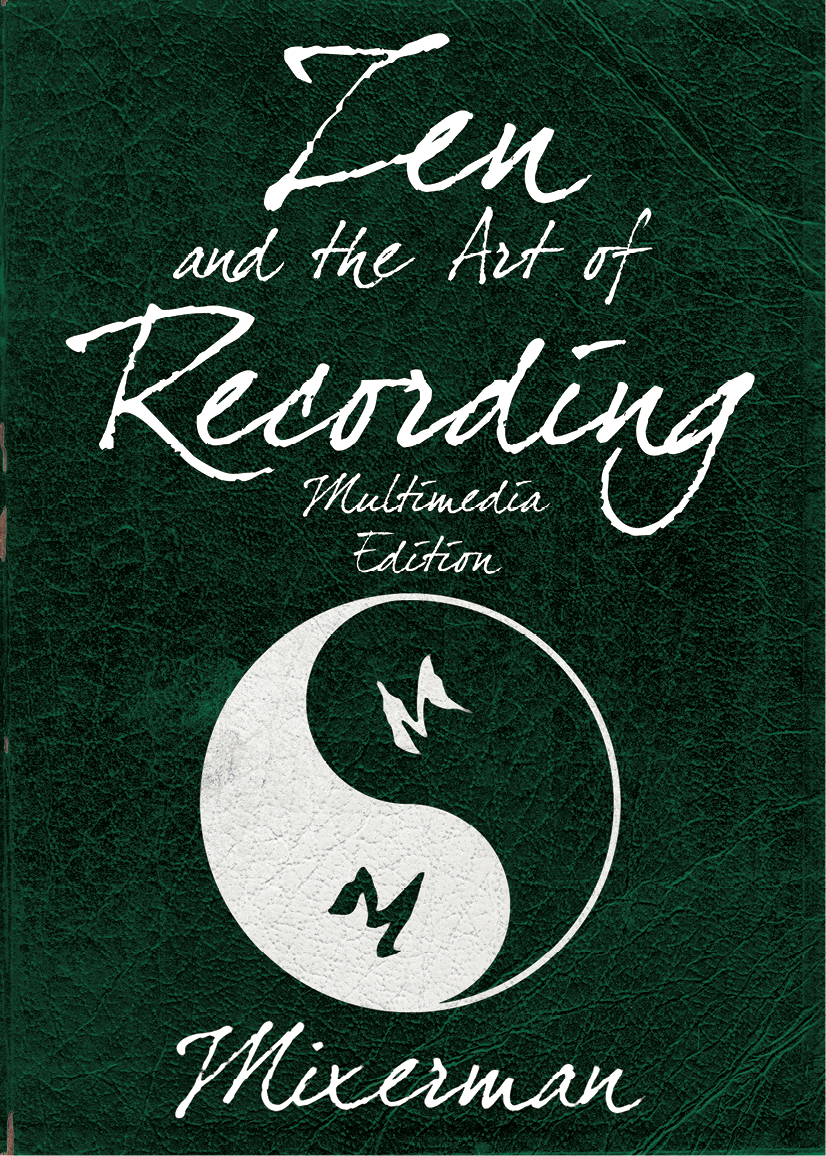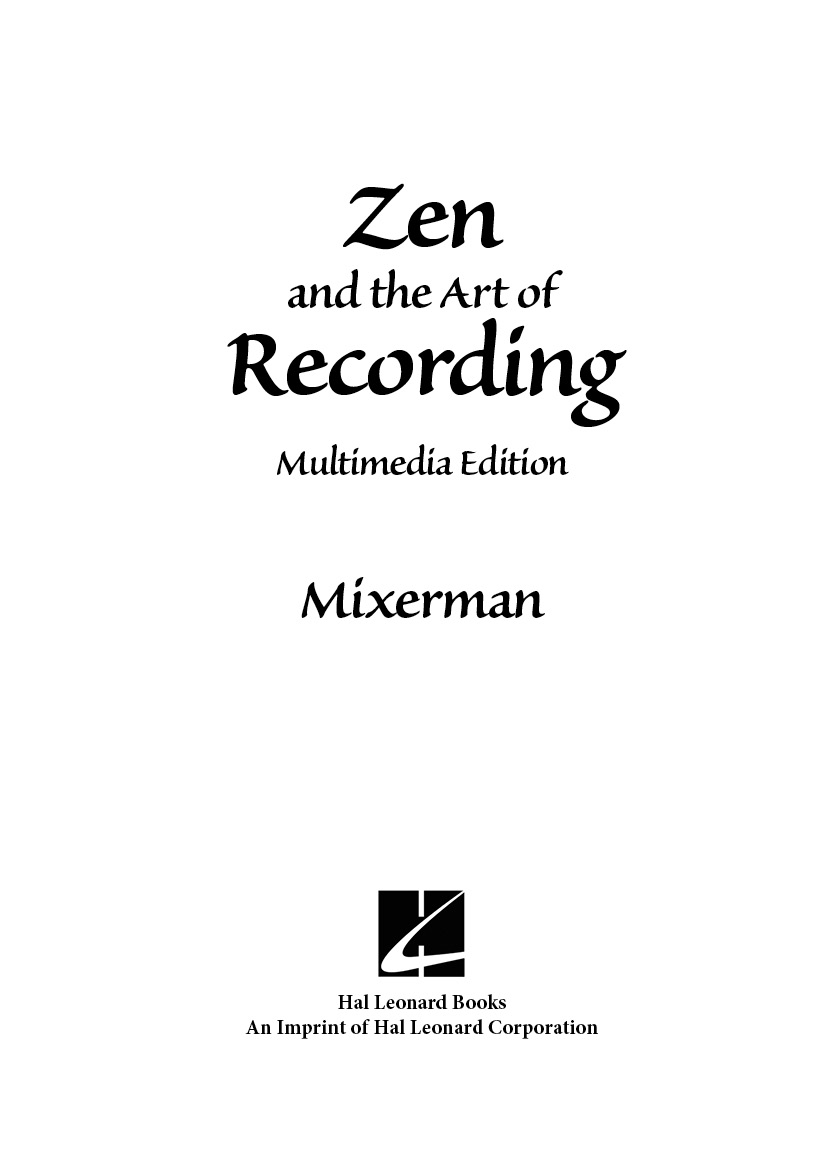

| Video Clip: 01 Introduction |
Anyone who is familiar with my writings knows that I do all that I can to avoid discussing technical information beyond the very basics. Theres a very good reason for thismusical decisions are of far more consequence than technical ones. However, in preparing to write this book, I realized theres just no way around it. Recording is an art that requires some measure of technical understanding.
This was especially evident on the Internet, where I found literally hundreds of posts asking how to set the attack and release times on a compressor. Many posters just wanted to know a preset that they could use for a particular source, which ignores a fundamental principle of what we dolisten.
As humans we are exceptionally good at recognizing patterns. Only an idiot savant could pick up a Rubiks Cube and solve it within the first few minutes. For the rest of us, we must learn how to solve the puzzle, and if you experiment with the toy long enough, you will eventually pick up the patterns that will help you solve it.
Music also has patterns, as does recording music, and you will come across recognizable patterns over time that will help you to streamline the decision process. But before were able to recognize patterns we have to see them in the first place, and in the case of recording, we have to hear. This requires you to develop and fine-tune your hearing to the point that you trust it above all other senses.
The good news is that youre already familiar with musical patterns, you just dont necessarily know it. I could play three notes in such a way that most all of you will sing the next note in the series without prompting. If you play the notes C, up a fifth to G, and down a minor third to an E, most all of you will sing an F. Thats because the resolution of those notes forms a recognizable pattern. Scales are patterns. Chord progressions are patterns.
There is no doubt that we are far more comfortable with our sight than we are with our hearing when it comes to evaluating information. Ive brought up this example before, but the original Star Trek theme sounds completely different when youre not viewing the main titles along with it. The whooshing of the Enterprise flying past is far more obvious sans the picture, mostly because it seems almost random in nature.
When we discuss sound we often use terms that relate to our other senses, such as warm , dark , brittle , bright , like ass , transparent , etc. These are all feeling terms, which makes sense since the whole point of music is to evoke an emotional response. We tend to use feeling terms to describe sound because music and sound are inextricably attached.
Frequency information is often viewed more within the purview of the recordist than the producer, but this would ignore the fact that frequency relates directly to musical notes. Therefore, arrangement decisions can be made based not only on a part, but how all the parts work together within the frequency spectrum. Beethoven didnt have EQhe had to create frequency balance and contrast through his instrumentation and arrangement choices alone.
Tone is also often viewed within the purview of the recordist, but good tone requires good performance. As a producer, I listen to tone as an indicator of performance. As a recordist, I first need to pull a tone that inspires a performance. The musician is therefore an integral part of the tone. Which would explain why some people can make an instrument sing, and others can only make it sound. A musician who makes her instrument sing feels the sound as music, and that in turn will often evoke a reaction from the listener.
There was a time when a recording session required a designated engineerone whose only job was the capture. These lines have been blurred significantly over the years, and more often than not, the recordist is operating in some other capacity, either as a musician, artist, or producer. And if youre the chief engineer at your own studio, then you are likely a Default Producera role we will discuss in more detail later.
These days I operate as a Producer Recordist, which means Im performing two operations that require my full attention. Thats impossible. Fortunately, many processes that I must perform as a recordist are nearly automatic, which allows me to prioritize the musical decisions.
Given the realities of recording today, it is often best to simplify the capture process, so as to allow you to concentrate on whats most importantthe music itself. That said, I can only simplify things for you so much, as there are still technical considerations that cant be ignored. Stereo miking alone, done improperly, can cause auditory anomalies that will weaken the overall impact of a recording. The good news is, once you learn the sound of negatively interacting microphones, you will become virtually allergic to it such that it becomes difficult to make that kind of mistake in the first place.

